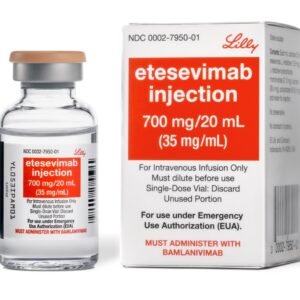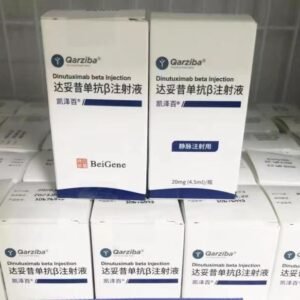Rosuvastatin Calcium
Functions and indications:
1. It is suitable for primary hypercholesterolemia (type IIa, including heterozygous familial hypercholesterolemia) or mixed dyslipidemia (type IIb) in which dyslipidemia cannot be properly controlled by diet control and other non-drug treatments. 2. This product is also suitable for patients with homozygous familial hypercholesterolemia as an adjuvant treatment for diet control and other lipid-lowering measures (such as LDL removal therapy), or when these methods are not applicable.
Usage and dosage:
The dosage and dosage of this product may vary in different dosage forms and specifications. Please read the specific drug instructions for use, or follow the doctor’s advice. 1. Before the start of treatment, patients should be given standard cholesterol-lowering diet control and maintain diet control during treatment. The use of this product should follow the principle of individualization, taking into account the individual cholesterol level of the patient, the expected cardiovascular risk, and the potential risk of adverse reactions. 2. Oral. The commonly used starting dose of this product is 5 mg, once a day. The selection of the starting dose should take into account the individual cholesterol level of the patient, the expected cardiovascular risk, and the potential risk of adverse reactions. For patients who need a more potent reduction in low-density lipoprotein cholesterol (LDLC), 10 mg once a day can be considered as the starting dose, which can control the lipid levels of most patients. If necessary, the dose can be adjusted to a higher dose level after 4 weeks of treatment. The maximum daily dose of this product is 20 mg. This product can be administered at any time of the day, with or without food. 3. Use in patients with renal insufficiency: No dose adjustment is required for patients with mild and moderate renal impairment. All doses of this product are contraindicated in patients with severe renal impairment. 4. Use in patients with hepatic impairment: In subjects with a Child-Pugh score of no more than 7, the systemic exposure of rosuvastatin is not increased. In subjects with a Child-Pugh score of 8 and 9, an increase in systemic exposure was observed. In these patients, an assessment of renal function should be considered. There is no experience in using this product in patients with a Child-Pugh score of more than 9. This product is contraindicated in patients with active liver disease. 5. Race: Increased systemic exposure has been observed in Asian subjects. This factor should be considered when determining the dosage for patients of Asian descent.
Adverse Reactions:
Adverse reactions seen with this product are usually mild and transient. In controlled clinical trials, less than 4% of patients withdrew from the trial due to adverse events. 1. The frequency of adverse events is ranked in the following order: common (>1/100, <1,10), occasional (>1/1,000, <1/100), rare (>1/10,000, <1/1000), very rare (<1/10,000). (1) Common: endocrine disorders (diabetes mellitus): nervous system abnormalities (headache, dizziness): gastrointestinal abnormalities (constipation, nausea, abdominal pain); skeletal muscle, joint and bone abnormalities (myalgia): systemic abnormalities (weakness). Uncommon: Skin and subcutaneous tissue disorders (pruritus, rash, and urticaria) (2) Rare: Immune system disorders (allergic reactions, including angioedema); gastrointestinal disorders (pancreatitis); skeletal muscle, joint, and bone disorders (myopathy (including myositis) and rhabdomyolysis). As with other HMG-CoA reductase inhibitors, the incidence of adverse reactions to this product tends to increase with increasing dose. Effects on the kidneys: Proteinuria (test strip test) has been observed in patients receiving this product, and most of the protein is derived from the renal tubules. Less than 1% of patients had an increase in proteinuria from none or trace to ++ or more at some point during treatment with 10 mg and 20 mg, and this proportion was approximately 3% of patients receiving 40 mg. In treatment with the 20 mg dose, proteinuria was observed to increase from none or trace to mild increases of +. In most cases, proteinuria decreased or disappeared spontaneously with continued treatment. A causal relationship between proteinuria and acute or progressive renal disease cannot be established based on clinical trials and post-marketing data to date. 2. Hematuria has been observed in patients using this product, and data from clinical trials show that its incidence is very low. (1) Effects on skeletal muscle: Effects on skeletal muscle have been reported in patients treated with various doses of this product, such as myalgia, myopathy (including myositis), and rarely rhabdomyolysis, especially in patients using doses greater than 20 mg. (2) Dose-related increases in creatine kinase (CK) levels have been observed in patients taking this product: most cases are mild, asymptomatic, and transient. If CK levels are elevated (>5×ULN), treatment should be discontinued (see Precautions). (3) Effects on the liver: As with other HMG-CoA reductase inhibitors, dose-related increases in transaminases have been observed in a small number of patients taking this product: most cases are mild, asymptomatic, and transient. 3. Post-marketing experience: In addition to the above reactions, the following adverse events have been reported during the post-marketing use of this product: (1) Rare: Hepatobiliary system diseases (elevated liver transaminase). (2) Very rare: Nervous system disorders (polyneuropathy, memory loss); Hepatobiliary system disorders (jaundice, hepatitis); Musculoskeletal system disorders (arthralgia): Urinary system disorders (hematuria). (3) Unknown: Respiratory, thoracic, mediastinal disorders (cough, dyspnea); Gastrointestinal system disorders (diarrhea); Skin and subcutaneous tissue disorders (Stevens-Johnson syndrome): General symptoms and medication site conditions (edema); Psychiatric disorders: Depression, sleep disorders (including insomnia and nightmares) (4) Pediatric patient population: In a 52-week clinical trial of children and adolescents treated with rosuvastatin, it was found that their creatine kinase increased by more than 10 × ULN, and muscle symptoms observed after exercise or increased physical activity were observed more frequently than in clinical trials conducted in adults. In other aspects, the safety of rosuvastatin in children and adolescents is similar to that in adults. 4. Effect on the liver: Like other HMG-CoA reductase inhibitors, in a small number of patients taking this product, the effect of the product may not be indicated. In the medium term, the effect of the product is very rare. Hepatobiliary system diseases are very rare. Jaundice and hepatitis are rare. Elevated liver transaminases are rare. Musculoskeletal system diseases are rare. Joint pain. Nervous system diseases are very rare. Polyneuropathy and memory loss.
Contraindications:
This product is contraindicated for: 1. Those who are allergic to rosuvastatin or any ingredient in this product. 2. Patients with active liver disease, including unexplained persistent elevation of serum transaminases and any increase in serum transaminases exceeding 3 times the upper limit of normal (ULN)
Share:
Products
Our offers
Health Classification
Let us work together to protect precious health






























